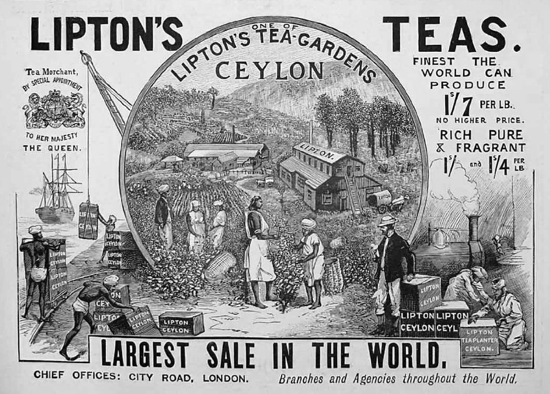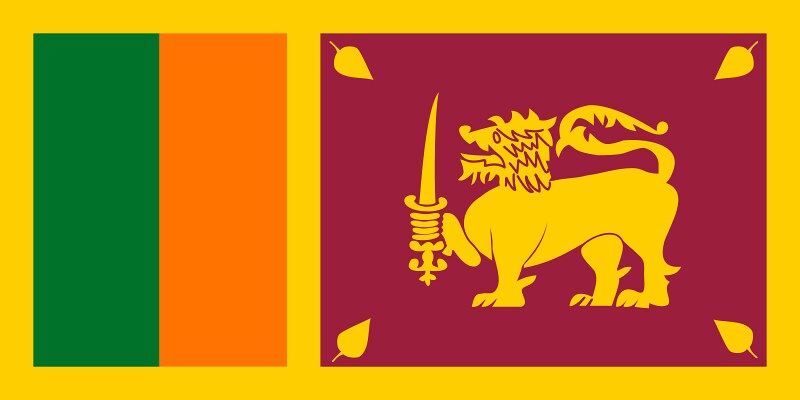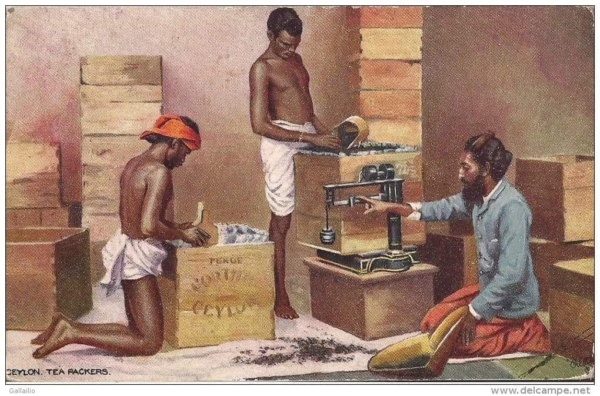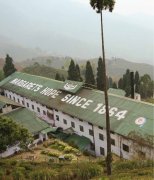Where is the most famous brand of Ceylon black tea produced? the historical story of Sri Lanka, the country where Ceylon black tea is produced.
As early as the late 19th century, Sri Lanka (formerly Ceylon) began to grow and produce tea.
It was a small business until it caught the attention of an entrepreneurial Scotsman.
This man was Sir Thomas Lipton (Sir Thomas Lipton), whose name later became synonymous with tea.

Sir Lipton eventually became quite rich because he initially opened a chain of grocery stores in Scotland and eventually opened grocery stores all over Britain.
As a shrewd businessman, Lipton wanted to buy tea directly from growers, bypassing middlemen, in order to develop a working-class market so that they could afford to consume tea.
The legacy of colonial capitalism continues in the tea garden on this emerald island.
For example, there are still some quaint English names: Alutenne, Annesley, Belmont, Byrde's Land, Elliewatte, Havelock, Portswood and Tullybody.
Despite its small size, Sri Lanka is still the world's fourth largest tea producer after China, India and Kenya.

Historically, Sri Lankan tea has been used to make cheap tea bags-a legacy that Sir Lipton left to the country. However, in order to keep up with the current market demand, the situation has changed greatly. Now people want to drink tea of higher quality and better taste.
The New Vithanakande Tea Garden from Ratnapura District also has high-quality Ceylon black tea. The tea garden was founded in the 1940s by PBH Pilapitiya, a native who used to work in a British-owned tea garden.

Currently, Vithanakande's green tea comes from about 6000 independent small growers in the surrounding area. Similar examples of tea gardens have been seen in South Asia, which is a good way to spread economic benefits to the wider community. This "decentralization" practice is a quite new phenomenon in the tea industry, and it is hoped that this practice can be developed.
After tasting Vithanakande tea at a trade fair, I was fascinated by them. Its taste is complex and subtle, rich and well balanced. Mainly the smell of honey and syrup. Can drink directly, enjoy the silky taste, as well as rich taste and natural sweetness. Or, if you like, you can add a little milk and sugar.
I hope the epidemic will come to an end as soon as possible and one day I will be able to visit Sri Lanka. But not only because of its tea, but also because of its gorgeous tropical scenery and rich culture.
Sri Lankan people's main religious belief is Buddhism, believing in the more conservative upper seat.
Architecture, especially traditional architecture and temples, is similar to the Dravidian style found in southern India.
Fortunately, the island seems to have largely emerged from the bloody civil wars of the 1980s and 1990s. It is hoped that they can carefully develop their tea industry and other industries to protect their fragile ecosystem.
Important Notice :
前街咖啡 FrontStreet Coffee has moved to new addredd:
FrontStreet Coffee Address: 315,Donghua East Road,GuangZhou
Tel:020 38364473
- Prev

What is the new lucky Walden blue? Which one tastes better, Luckin Coffee Ruina ice series or latte?
Hi, pick it up! "eat so sleepy" to "dry" Rui Xing Rui Na Bing, we have come to evaluate again. Photo this issue evaluation theme: Ruixingruinabing yyds series of other (seemingly) delicious latte series do not procrastinate, let's go straight to the theme! Raw coconut latte > meteorite thick milk latte > Haas avocado Renna iced matcha latte > Val
- Next

Darjeeling Black Tea Top Estate| Margaret's Hope Manor History Story and Black Tea Flavor Features
Those who have a preliminary understanding of Darjeeling black tea are estimated to have heard a little about some of the top black tea estates in Darjeeling in India. Among them, Margaret Hope Tea Estate is famous among many Darjeeling tea lovers. Margaret's Hope Tea Estate, called Margaret's Hope Estate, has a paragraph behind the name.
Related
- What is the standard process for the purpose of coffee cup testing? What is the difference between hand-brewed coffee and cup testing?
- How to use hand-brewed coffee paragon small golden balls? How does cold coffee lock in the aroma of coffee?
- Is American coffee black? What is the difference between American coffee and drip coffee?
- Unexpected! Well-known tea beverage brand Lele Tea will withdraw from the Zhengzhou market!
- Starbucks enters the fashion and beauty industry?! Netizen: Give me an ice American eye cream
- Why can American refills for free? The difference between Americano and American drip pot coffee
- Being chased out of the rain in front of Starbucks?! Store: Sheltering from rain under umbrellas poses a safety hazard
- The white moonlight has changed?! Lucky launches "Big Winter Pear American"
- Hand-brewed coffee three-stage method, high-sweet and universal brewing method to share! What does the high sweet water level of hand-brewed coffee mean?
- What is the difference between raw, refined and full espresso coffee? How to extract espresso and taste good?

